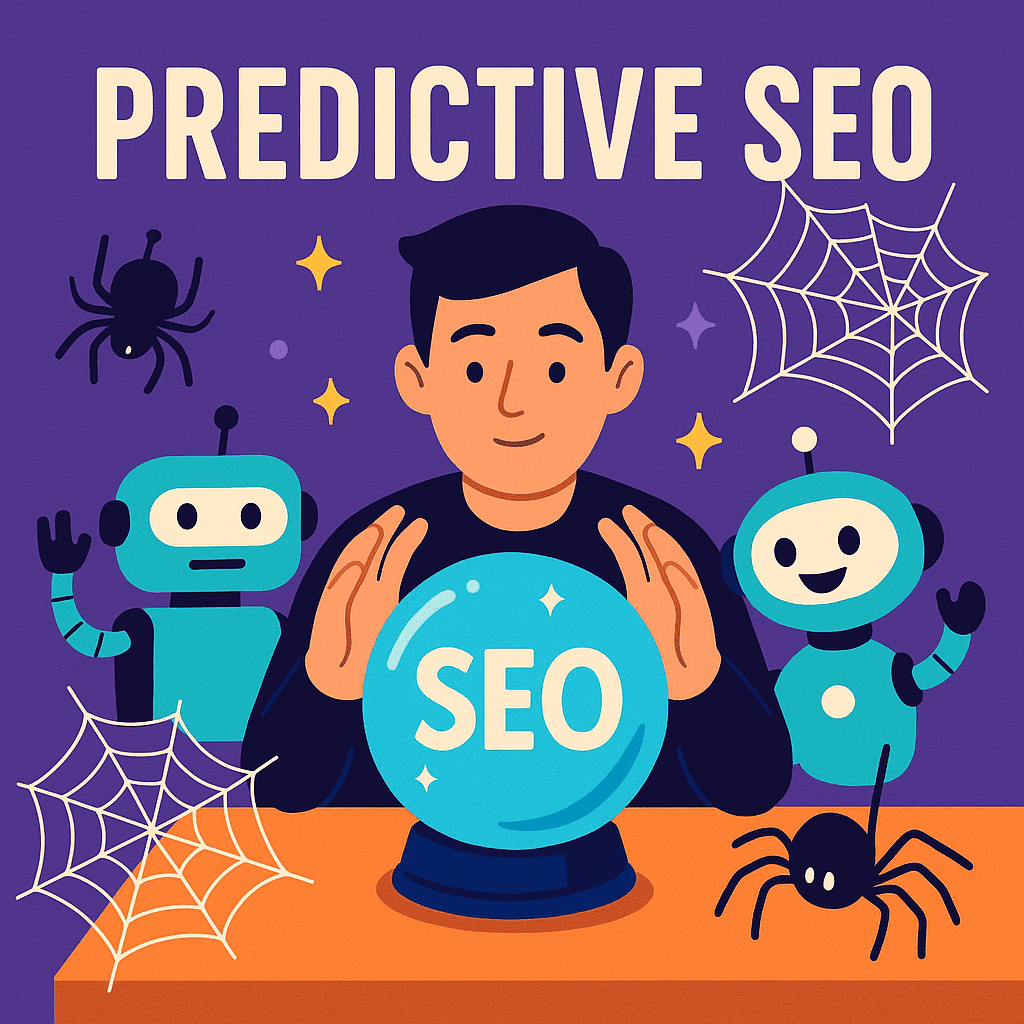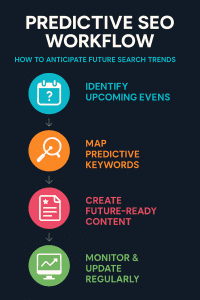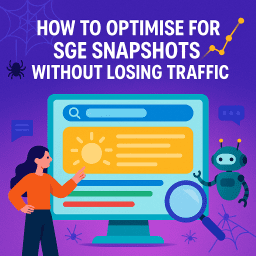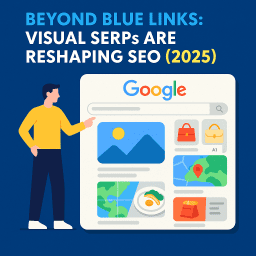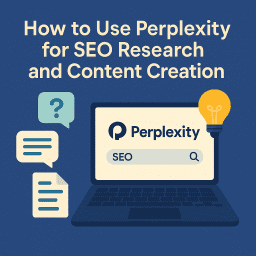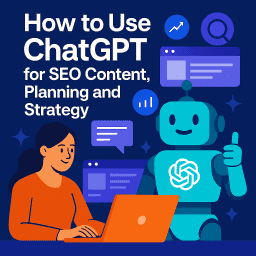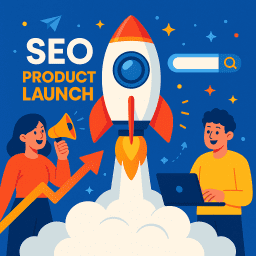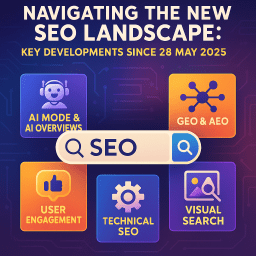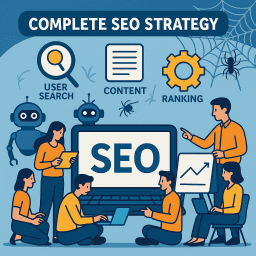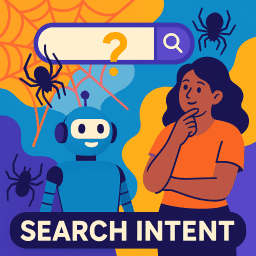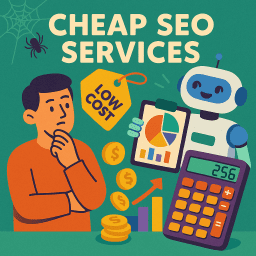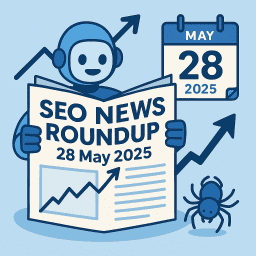Predictive SEO: Get Ready for Future Search Trends
Get ahead of the curve before the competition even sees it coming.
🔮 The Future Belongs to Those Who Predict It
Most SEO strategies are reactive. You identify existing demand, optimise for it, and compete with dozens of others doing the same thing. But in 2025 and beyond, the winners will be those who anticipate searches that haven’t happened yet – and are ready with content before the first query is typed. This is the power of Predictive SEO.
What Is Predictive SEO?
Predictive SEO is the practice of forecasting future search trends and preparing content to capture them before they appear in keyword tools. It’s part market intelligence, part data science, and part creativity. By anticipating what people will search for tomorrow, you can secure rankings – and even AI answer placements – before your competitors know the opportunity exists.
Why Predictive SEO Matters in 2025
- AI search is anticipatory – Platforms like Google Enhanced Overviews (GEO), AI Overviews (AEO), and Perplexity often suggest answers to queries that haven’t been explicitly searched yet.
- Search trends move faster – The gap between a new trend emerging and peak search volume is shrinking.
- First-mover advantage sticks – Early, relevant content can maintain rankings even as competition grows.
- AI results reward “seed” content – AI assistants often pull from the first credible sources they indexed on a topic.
How to Spot Future Search Opportunities
Predictive SEO relies on recognising early signals before they hit mainstream search volume. Look for:
- News Velocity: A noticeable increase in articles on a niche subject before public interest peaks.
- Industry Leaks: Product announcements, trademark filings, or conference agendas that hint at upcoming developments.
- Regulatory Changes: New laws or policy changes that will affect how people buy, travel, or work.
- Culture Watch: Viral memes, TikTok challenges, or TV plot lines gaining momentum online.
- Tech Timelines: Software updates, product release cycles, and seasonal launches.
Tools and Data Sources to Predict Search Demand
- Google Trends — Track “Breakout” and “Rising” queries for early signals.
- Exploding Topics — Discover emerging subjects before they peak.
- Glimpse — Adds predictive layers to Google Trends data.
- Social listening platforms like Brandwatch, Talkwalker, or Mention.
- Patent databases, regulatory bulletins, and trade journals.
- Reddit, niche forums, and Discord groups for “ground-level” chatter.
How to Build a Predictive Keyword Map
- Identify an upcoming event or change – e.g., a product launch, legal change, or major sports tournament.
- List seed terms – The obvious keywords tied to the event.
- Expand to speculative long-tails – Use AI tools to simulate likely queries (“Will X work with Y?”, “X vs Y in 2025”).
- Cluster keywords into themes – Group similar queries to plan content pieces.
How to Create “Future-Ready” Content
- Use evergreen page structures you can update – e.g., “Best laptops for designers in 2025” with placeholders.
- Create pre-designed images and videos that can be updated instantly.
- Write modular content with sections ready to be swapped out as facts emerge.
- Build internal links early to pass authority to the page before the search surge.
How to Avoid Risks in Predictive SEO
- Base predictions on credible data, not guesswork.
- Clearly indicate when information is based on projections.
- Set alerts to update content the moment new facts are available.
- Archive or redirect speculative content that’s no longer relevant.
Predictive SEO in Action
Travel Industry: A travel blog prepared “UK visa-free countries for EU citizens” content months ahead of a treaty change, ranking #1 on announcement day and holding it for over a year.
Tech Blogging: A gadget site built an iPhone 17 release hub six months early. As leaks emerged, they updated content daily and dominated SERPs during launch week.
AI’s Role in Predictive SEO
AI tools like GPT-5, Gemini, and Claude can cluster potential queries based on known future events. This allows you to build content that’s primed not just for traditional SERPs, but also for AI-driven answers in GEO and AEO. The earlier your content is in the index, the greater your chance of being the “go-to” answer source.
How to Start Predictive SEO Tomorrow
- Pick one upcoming event in your niche.
- Map potential queries with an AI tool.
- Create a content skeleton and set update reminders.
- Build a small internal link network to the page.
“Predictive SEO isn’t fortune telling – it’s structured anticipation. If you can see what’s coming, you can own the conversation before it even begins.” – David Roche
What the Experts Are Saying
- “Predictive SEO is about building before the demand wave hits, so you ride it instead of chasing it.” – Aleyda Solís
- “AI search changes the game – early content now gets baked into AI responses and stays there.” – Rand Fishkin
- “The smartest SEOs are acting like traders – spotting signals and moving before the market reacts.” – Lily Ray
Final Thoughts
Predictive SEO is more than a clever tactic – it’s a mindset shift. Instead of reacting to search trends after they appear, you’re actively shaping your strategy to anticipate what’s next. In a world where AI-driven search is evolving at breakneck speed, being the first credible source on an emerging topic can deliver sustained visibility, authority, and trust long after the initial surge.
The beauty of predictive SEO is that it blends creativity with data. You’re not blindly guessing – you’re combining trend analysis, cultural awareness, and AI-powered forecasting to build content that feels timely and relevant from day one. And because early movers often lock in their position in both Google’s rankings and AI-generated overviews, the rewards can be disproportionately high compared to the effort.
Whether you’re preparing for a product launch, a policy change, or a cultural trend, the principle is the same: be present before the crowd arrives. Stay vigilant, test ideas, and refine quickly as the story develops. In doing so, you won’t just be competing in the present – you’ll be leading the conversation about the future.
Frequently Asked Questions
How is predictive SEO different from regular SEO?
Regular SEO targets existing search demand, while predictive SEO focuses on forecasting future search queries before they appear in keyword tools.
Why is predictive SEO becoming more important?
With AI-driven search anticipating user needs, being early gives you a better chance of becoming the default source for answers.
What tools can help with predictive SEO?
Google Trends, Exploding Topics, Glimpse, and social listening platforms are excellent for spotting early signals.
How far in advance should I prepare predictive content?
It depends on the topic, but anywhere from 1–6 months ahead is ideal for most industries.
Is predictive SEO risky?
Yes, if predictions are made without credible evidence. Mitigate risk by basing your content on reliable data and updating frequently.
Can AI help with predictive SEO?
Absolutely — AI tools can simulate likely future queries and help map them into content plans.
Should predictive SEO content be published immediately?
Yes, but structure it to allow quick updates when new facts emerge.
What industries benefit most from predictive SEO?
Tech, travel, entertainment, e-commerce, and finance all see strong returns from being early to a trend.
How do I measure predictive SEO success?
Track early rankings, click-through rates, and traffic growth as the trend matures.
Can predictive SEO work for small websites?
Yes — smaller sites can often move faster than large brands, giving them an agility advantage.
Video Recap – Predictive SEO — The Future of Searches Explained
Search is becoming predictive – AI now knows what users want before they even ask. In this video, I’ll explain how Predictive SEO works and what you can do to make sure your brand appears first in tomorrow’s results.
The best SEO isn’t about reacting – it’s about anticipating. Stay ahead of your audience, and you’ll stay ahead of every algorithm.


